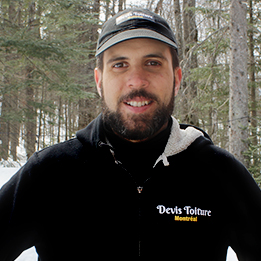Top 3 Most Popular Electrical Jobs In Canada


Michaël from Devis Toiture
Blog section Feb. 13 2018
As we all know, electrical work is very important to Canadians and we must ensure that we hire a qualified and responsible electrician to do the job.
Here's a list of the Top 3 Most Popular Electrical Jobs in Canada in 2022.
Electrical Troubleshooting
An electrical failure can occur at any time, depriving you of electricity.
It can be due to a defective device, an obsolete installation or standards not respected.
To ensure your safety, we advise you not to repair your breakdown yourself.
You could start a fire or electrocute yourself.
For your electrical troubleshooting, call a professional who will determine the origin of the breakdown (global or local).
The latter will test the different elements of the installation to determine the source of the problem and repair the fault.
Renovation Of Electrical Installations
We use more and more technologies working with electricity, the good functioning of the electricity network thus participates in our comfort and our safety.
If your electrical equipment no longer meets the standards or often breaks down, or if your installation is older than 1991, an electrical renovation is necessary.
It must necessarily be carried out by a professional. The latter will carry out a study of the existing network, its reliability, and possible faults.
Depending on the diagnosis, a renovation is carried out, which can be partial - it will only target one or more parts - or total, with the removal of the installation and installation of a new network compliant with the NFC 15-100 standard.
Heating Conversion
Converting your oil or oil heating to an electrical system is an operation that provides great economic and ecological benefits.
The installation of an electric heating system makes it possible to reduce heating costs considerably, to feel better comfort through uniform heat diffusion, to reduce pollution and to be more energy efficient. Prior to replacement, the contractor must perform a heating requirement calculation.
"Since the installation of the original heating system, changes may have been made to the building envelope (e.g. replacement of windows, insulation of attic space under the roof)," says Henry Blackburn, technical director at the CMPLD.
The combustion device may thus be oversized in relation to the actual heat requirements.
"To facilitate this operation, the CMPLD provides its members with a heat loss and gain calculator. Once this is done, the contractor can proceed with the conversion.
Most often, this involves replacing an oil-fired system with one that uses electricity or natural gas.
"This change is often made at a time when the insurer asks its client to change its fuel tank because it is no longer safe and risks leaking," says the owner of a Calgary electrical services company.
Whether the system is forced air or hot water, the new unit generally keeps all ducts, air vents (for forced air) or radiators (for the hot water system).
The conversion for a forced air system is done by a tinsmith, while the conversion for a hot water system is done by a plumber specialized in heating.